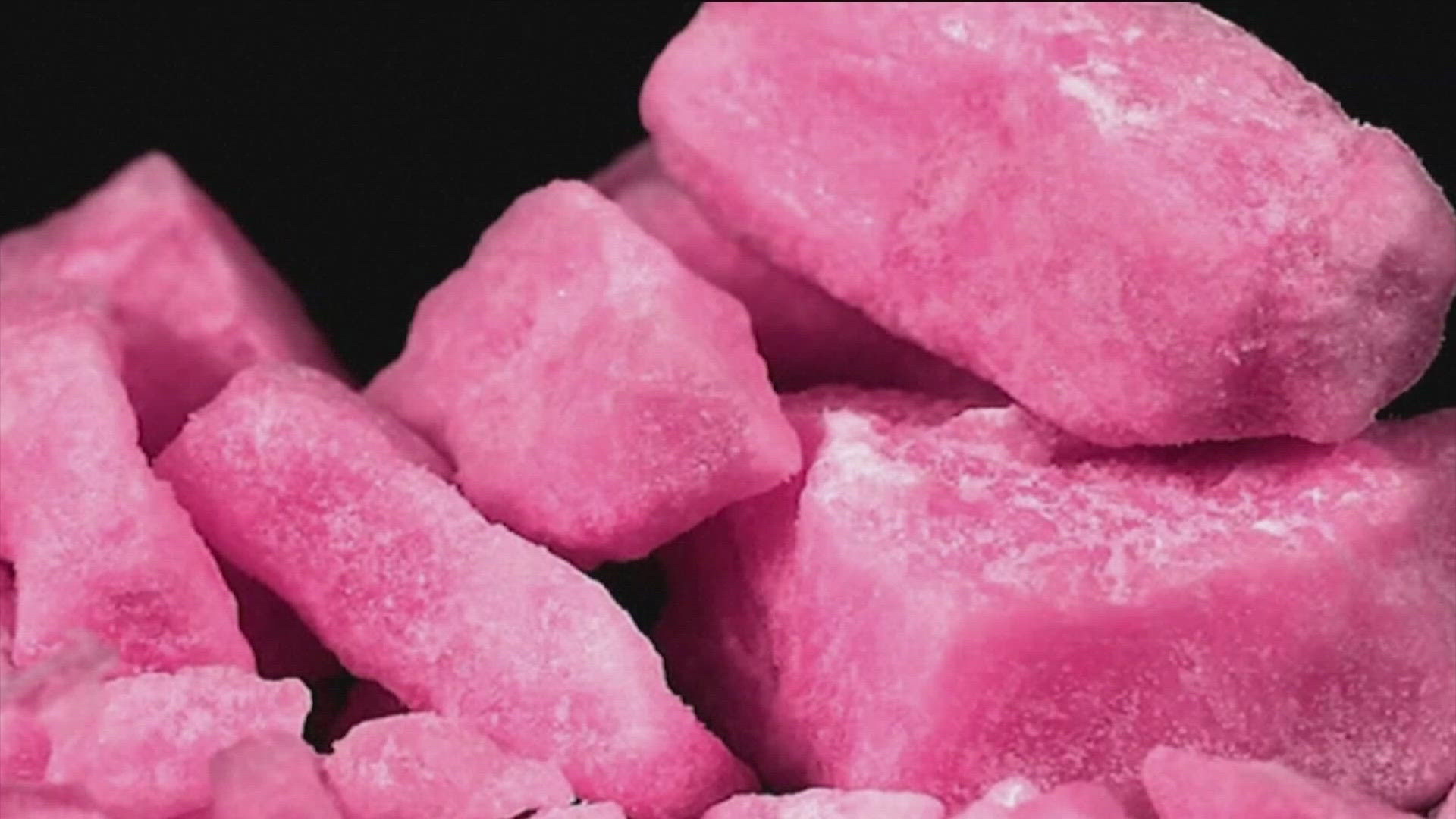TRAVIS COUNTY, Texas — A dangerous drug mixture has been discovered in Central Texas.
"Pink cocaine" was recently found in Travis and Hays counties, according to the Houston Division of the Drug Enforcement Administration (DEA).
What is 'pink cocaine' and why is it a concern?
The substance typically comes in a pink powder, often including combinations of several drugs, such as ketamine and MDMA (Ecstasy), cocaine and fentanyl, as well as several others.
Despite the name, the U.S. Drug Enforcement Administration (DEA) says the drug doesn't always contain cocaine. Every batch is different and can contain a different mix of substances.
Brian Cole, the Assistant Special Agent in Charge of the DEA's Austin office, said the pink cocaine found in the Austin area contained cocaine, heroin and MDMA.
This "new" psychedelic drug is not consistent from one batch to the next, "and a person does not know how their body will react to it each time," according to the DEA.
"It could be a totally different mix each time you buy a batch of pink cocaine, which makes it so dangerous," Cole said. "You don't know what you're getting in the batch that you're purchasing."
It was once made with psychedelic drug 2C-B, but this is no longer as common. Sometimes called "tusi," pink cocaine can smell sweet and it's usually dyed a bright shade to differentiate it from other powders and make it look like a new drug.
The drug can become addicting and, in some instances, deadly.
"Whenever you are taking a cocktail of drugs that have been mixed together by some unknown person that you've never met who is not trained in mixing drugs, you are taking your life in your own hands," Cole said. "It is a lethal gamble that you're taking with your life."
How common is the drug?
"Pink cocaine" is often found at the retail level in cities with busy nightclubs, such as New York, Miami and Los Angeles.
It is most prevalent among young people between 18 years old and 30 years old. Cole said they have found pink cocaine twice in Downtown Austin in the last year, once in February and then again in August.
Cole said young people often have a false sense of safety around pink cocaine and can end up unknowingly taking substances like fentanyl.
"When they're taking this, they're literally dancing with danger. These drugs contain unknown quantities of substances and they don't know what they're getting in each batch," Cole said. "These substances can call can wreak havoc on their body and their mind."
The "drug cocktail" was recently found in the toxicology report of former One Direction star Liam Payne, who died on Oct. 16 after falling out of a hotel balcony in Argentina.

